Home / Albums / Prehistoric 263

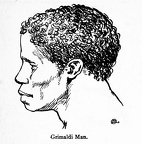 Grimaldi Man
Grimaldi Man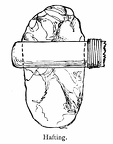 Hafting
Hafting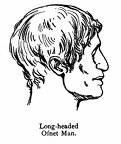 Long-headed Ofnet Man
Long-headed Ofnet Man Glaciers and Moraines
Glaciers and Moraines Framework of kayak
Framework of kayak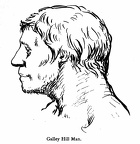 Galley Hill Man
Galley Hill Man Falling Spear
Falling Spear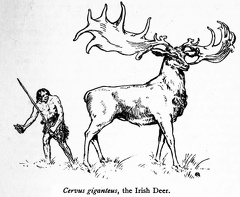 everydaylifeino00quen 0127 result
everydaylifeino00quen 0127 result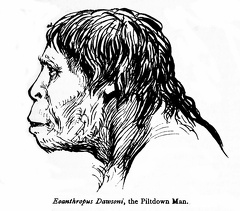 Eoanthropus Dawsoni, the Piltdown Man
Eoanthropus Dawsoni, the Piltdown Man Eskimo Bladder Dart, Harpoon and Bird Dart
Eskimo Bladder Dart, Harpoon and Bird Dart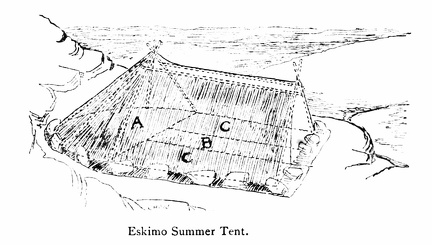 Eskimo Summer Tent
Eskimo Summer Tent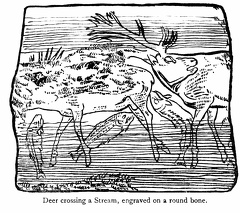 Deer crossing a stream, engraved on a round bone
Deer crossing a stream, engraved on a round bone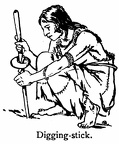 Digging-stick
Digging-stick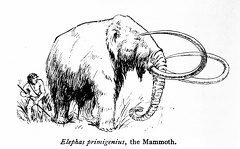 Elephas primigenius, the Mammoth
Elephas primigenius, the Mammoth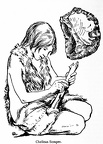 Chellean Scraper
Chellean Scraper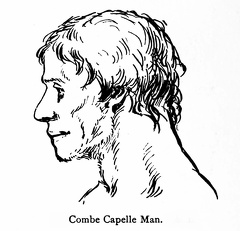 Combe Capelle Man
Combe Capelle Man Chellean Boucher or Hand-axe
Chellean Boucher or Hand-axe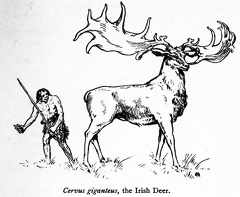 Cervus giganteus, the Irish Deer
Cervus giganteus, the Irish Deer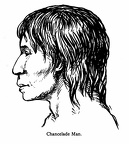 Chancelade Man
Chancelade Man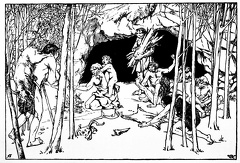 Cave Dwellers
Cave Dwellers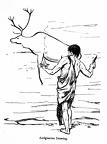 Aurignacian Drawing
Aurignacian Drawing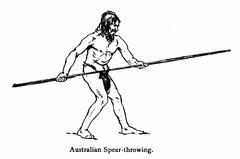 Australian Spear-throwing
Australian Spear-throwing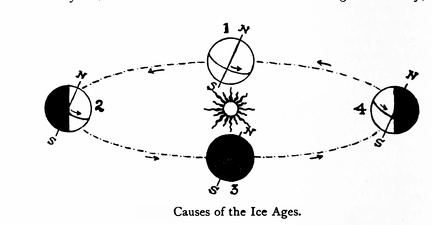 Causes of the Ice Ages
Causes of the Ice Ages A Primitive Spindle
A Primitive Spindle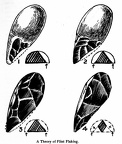 A Theory of Flint Flaking
A Theory of Flint Flaking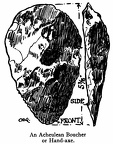 An Acheulean Boucher
An Acheulean Boucher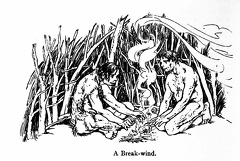 A Break-wind
A Break-wind A Bark Raft
A Bark Raft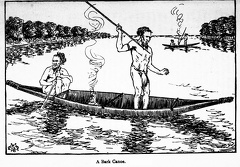 A Bark Canoe
A Bark Canoe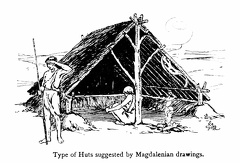 Type of Huts suggested by Magdalenian drawings
Type of Huts suggested by Magdalenian drawings Mousterian Spear-head
Mousterian Spear-head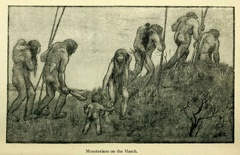 Mousterians on the march
Mousterians on the march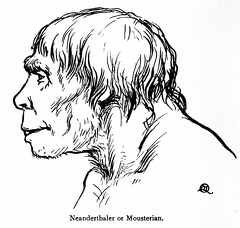 Neanderthaler or Mousterian
Neanderthaler or Mousterian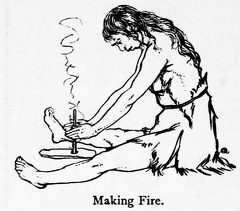 Making Fire
Making Fire Making Grass Rope
Making Grass Rope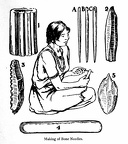 Making of bone needles
Making of bone needles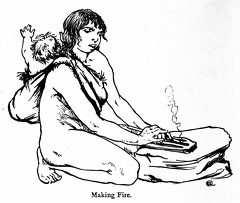 Making Fire 2
Making Fire 2 Magdalenian Painting
Magdalenian Painting Magdalenian Cave Painting
Magdalenian Cave Painting Magdaleneian Carved Ivory Harpoon-thrower
Magdaleneian Carved Ivory Harpoon-thrower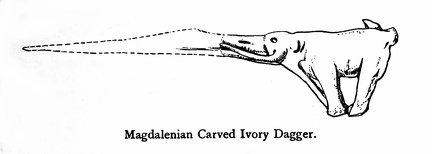 Magdalenian Carved Ivory Dagger
Magdalenian Carved Ivory Dagger Grimaldi Man
Grimaldi Man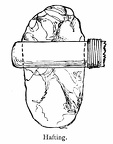 Hafting
Hafting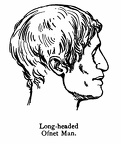 Long-headed Ofnet Man
Long-headed Ofnet Man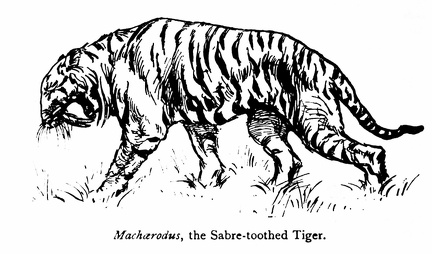 Machairodus, the Sabre-toothed Tiger
Machairodus, the Sabre-toothed Tiger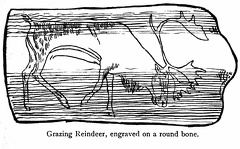 Grazing Reindeer, engraved on a round bone
Grazing Reindeer, engraved on a round bone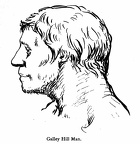 Galley Hill Man
Galley Hill Man Glaciers and Moraines
Glaciers and Moraines Falling Spear
Falling Spear Framework of kayak
Framework of kayak everydaylifeino00quen 0097 result
everydaylifeino00quen 0097 result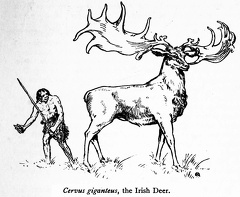 everydaylifeino00quen 0127 result
everydaylifeino00quen 0127 result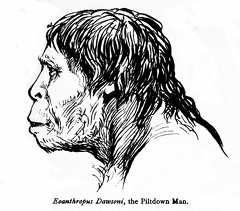 Eoanthropus Dawsoni, the Piltdown Man
Eoanthropus Dawsoni, the Piltdown Man Eskimo Bladder Dart, Harpoon and Bird Dart
Eskimo Bladder Dart, Harpoon and Bird Dart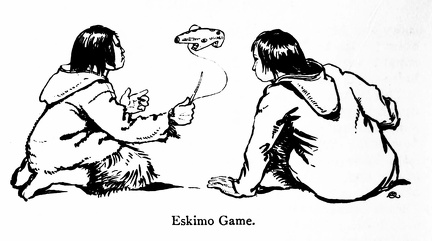 Eskimo Game
Eskimo Game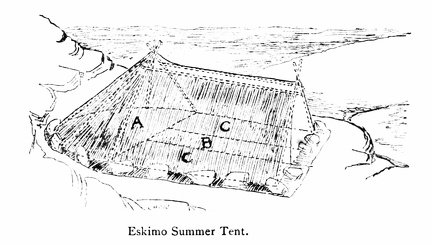 Eskimo Summer Tent
Eskimo Summer Tent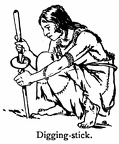 Digging-stick
Digging-stick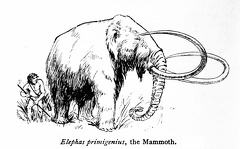 Elephas primigenius, the Mammoth
Elephas primigenius, the Mammoth Deer crossing a stream, engraved on a round bone
Deer crossing a stream, engraved on a round bone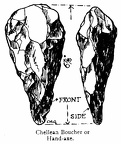 Chellean Boucher or Hand-axe
Chellean Boucher or Hand-axe



